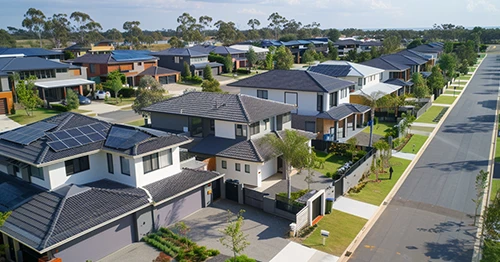Updated: 25 Jul, 2024
Table of Contents
- What is the LAFHA?
- What are the changes?
- LAFHA changes for temporary residents
- LAFHA changes for permanent residents and Australian citizens
- When will the changes occur?
- Who received LAFHA in the past?
- How to claim LAFHA on a 457 visa
- Why is LAFHA being restricted?
- How will the changes affect non-residents?
- Will non-residents receive compensation?
- What can non-residents do?
- How much can I borrow?
- How do the lenders view LAFHA?
Temporary visa holders on the Living Away From Home Allowance (LAFHA) will now have a reduced income due to changes in the LAFHA policy.
This may affect your borrowing capacity. Read on to find out how.
What is the LAFHA?
LAFHA is an allowance that is designed to be paid to an employee tax free, to cover the additional costs of living away from home. It has been an attractive incentive for overseas employees in Australia, bringing qualified workers into fields such as Marketing, Recruitment and IT.
The changes to LAFHA will mean that non-residents on temporary visas will no longer be eligible to receive LAFHA benefits in most cases.
What are the changes?
The LAFHA fringe benefits are going to be limited to employees who have a home in Australia for their own use, who are living away from it as a result of their job. The tax concession is available for a maximum of one year for each employee and each work location.
You may be required to prove the expenses you claim under this concession. In particular, your accommodation expenses such as rent or mortgage repayments will need to be substantiated.
LAFHA changes for temporary residents
Temporary residents do not receive any concessional arrangement and will move to the new LAFHA rules.
LAFHA changes for permanent residents and Australian citizens
If you entered into a LAFHA arrangement prior to the 8th of May 2012 then you may be eligible for a transitional arrangement which allows you to operate under the old rules until the 1st of July 2014.
When will the changes occur?
Starting on the 1st of July 2012, most 457 temporary work visa holders will no longer be eligible for LAFHA and the income of non-resident workers in Australia will be subject to full taxation.
Who received LAFHA in the past?
The Living Away From Home Allowance (LAFHA) in Australia is a tax benefit that was previously offered to all persons who were living away from home to work.
This included:
- Australian citizens living overseas to work;
- Australian citizens living in Australia who moved interstate for work; and
- All overseas employees holding a 457 visa or other temporary who relocated to Australia to work.
For those on a temporary visa who moved to Australia, this benefit generally came as part of a packaged salary. LAFHA is tax free, which made it an attractive incentive!
How to claim LAFHA on a 457 visa
If you are on a 457 visa and have moved to Australia from overseas, you will not be eligible for LAFHA unless:
- You have purchased an owner occupied property in Australia as a place of residence, and
- You must relocate to another area for work
The emphasis on the change in policy is moving away from your home in Australia, to continue working for your employer.
For example, if you are on a 457 visa and you own a home in Sydney but are sent to Perth to work then you will be eligible to claim LAFHA.
Why is LAFHA being restricted?
The Treasury’s decision to restrict LAFHA in Australia was due to many overseas workers on 457 business visas delay or postpone going on permanent visas, in order to avoid paying full taxes.
Furthermore, many Australian citizens and permanent residents working in Australia are ineligible to claim LAFHA.
Due to pressure, the government has amended the LAFHA policy and it’s applicability to 457 visa holders working in Australia.
How will the changes affect non-residents?
In most cases 457 business visa holders will be losing the tax-free LAFHA portion of their income.
The LAFHA changes may mean a large reduction in the income of non-resident families.
Will non-residents receive compensation?
Unfortunately, even with full-taxation of their incomes, non-resident employees in Australia will still not be eligible for the taxation and social benefits that Australian citizens and permanent residents are entitled to, such as health care assistance, children’s schooling expenses and other tax benefits for families with young children.
What can non-residents do?
Loss of LAFHA will undoubtedly provide a challenge for families on the 457 visa!
Families on the 457 visa, with young children, may have to consider moving back to their home country, re-negotiating their salaries or finding additional or new employment to protect their standard of living in Australia.
Temporary visa holders may also consider becoming permanent residents as soon as they’re eligible so at least they can receive some social benefits.
How much can I borrow?
Your borrowing capacity largely depends on your income! Unfortunately for 457 visa holders the LAFHA allowance will no longer be included as part of their income.
Because of this, your income may be insufficient to qualify for a high LVR loan. However, the amount that you can borrow largely depends on your financial situation and employment status.
With the assistance of a good mortgage broker, even if you are a temporary resident, you may be entitled to borrow up to 95% of the property value!
How do the lenders view LAFHA?
If you have carefully examined your circumstances and are sure you will continue to receive LAFHA even after the LAFHA changes, you may want to find out about how the LAFHA income is seen by the lenders.
So how will the banks view your LAFHA income? You can find out more about how they assess this on our LAFHA income page.





